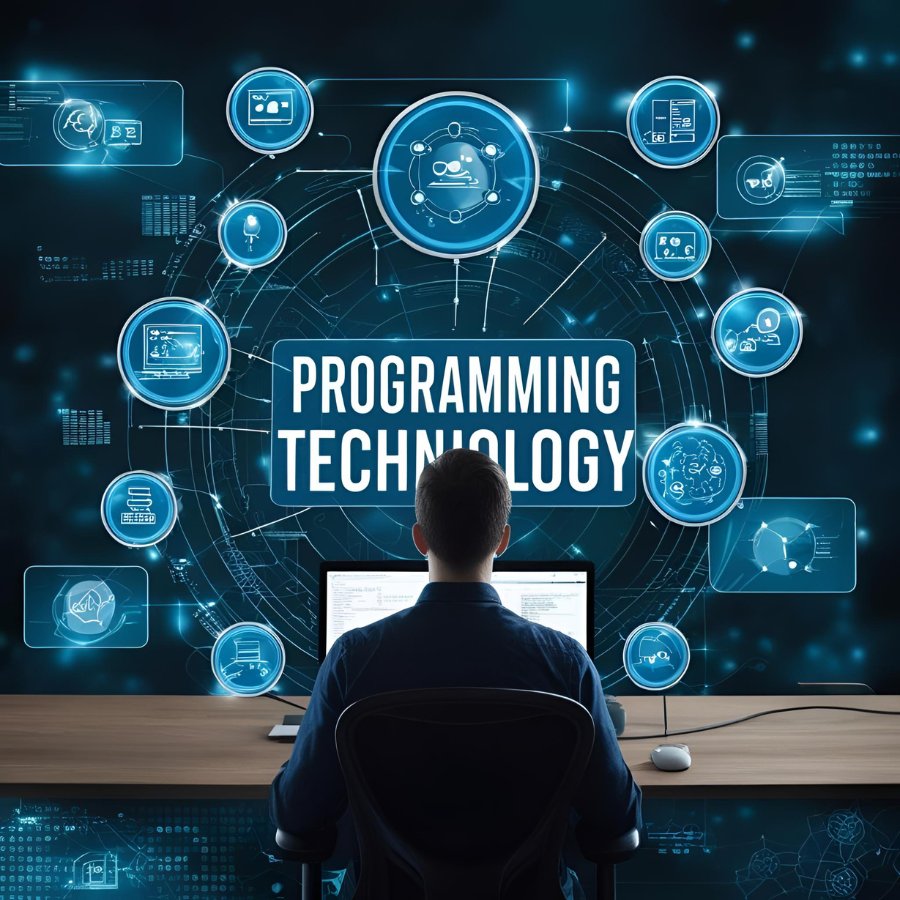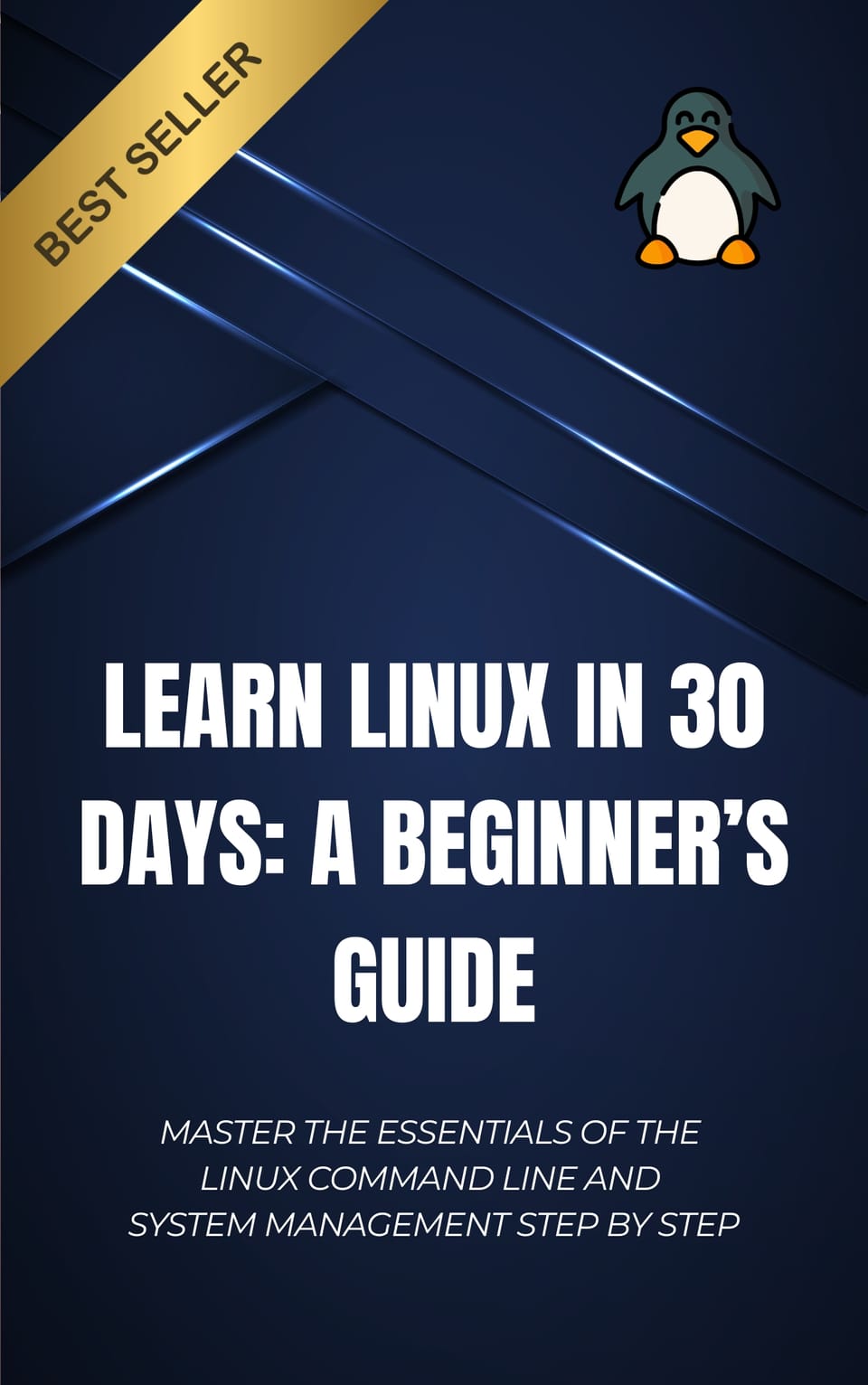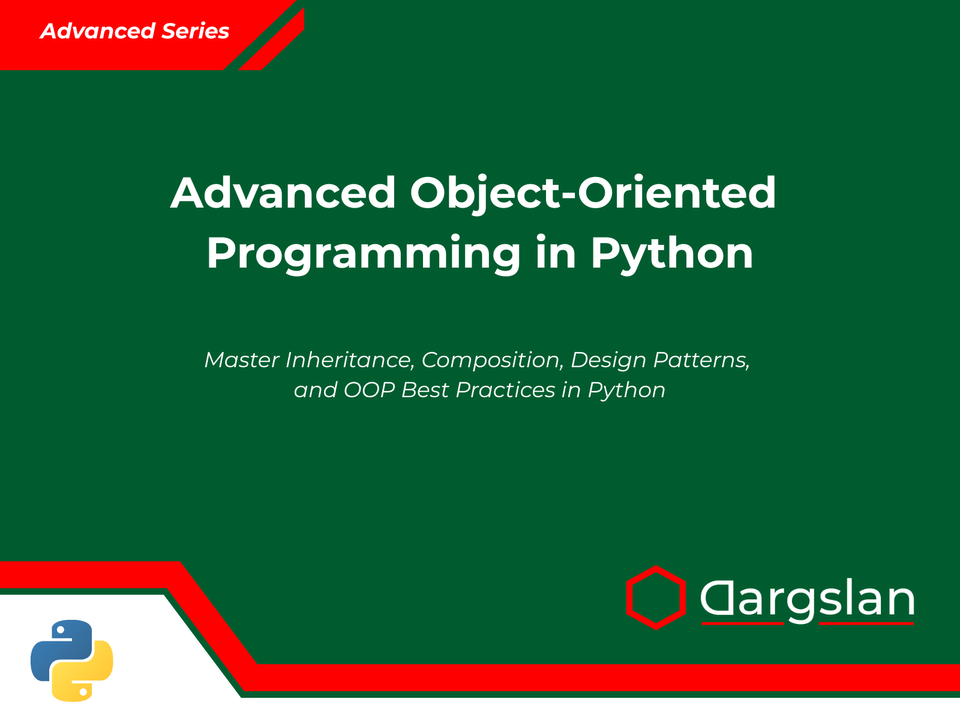Book Review: Python Syntax Crash Course for Beginners
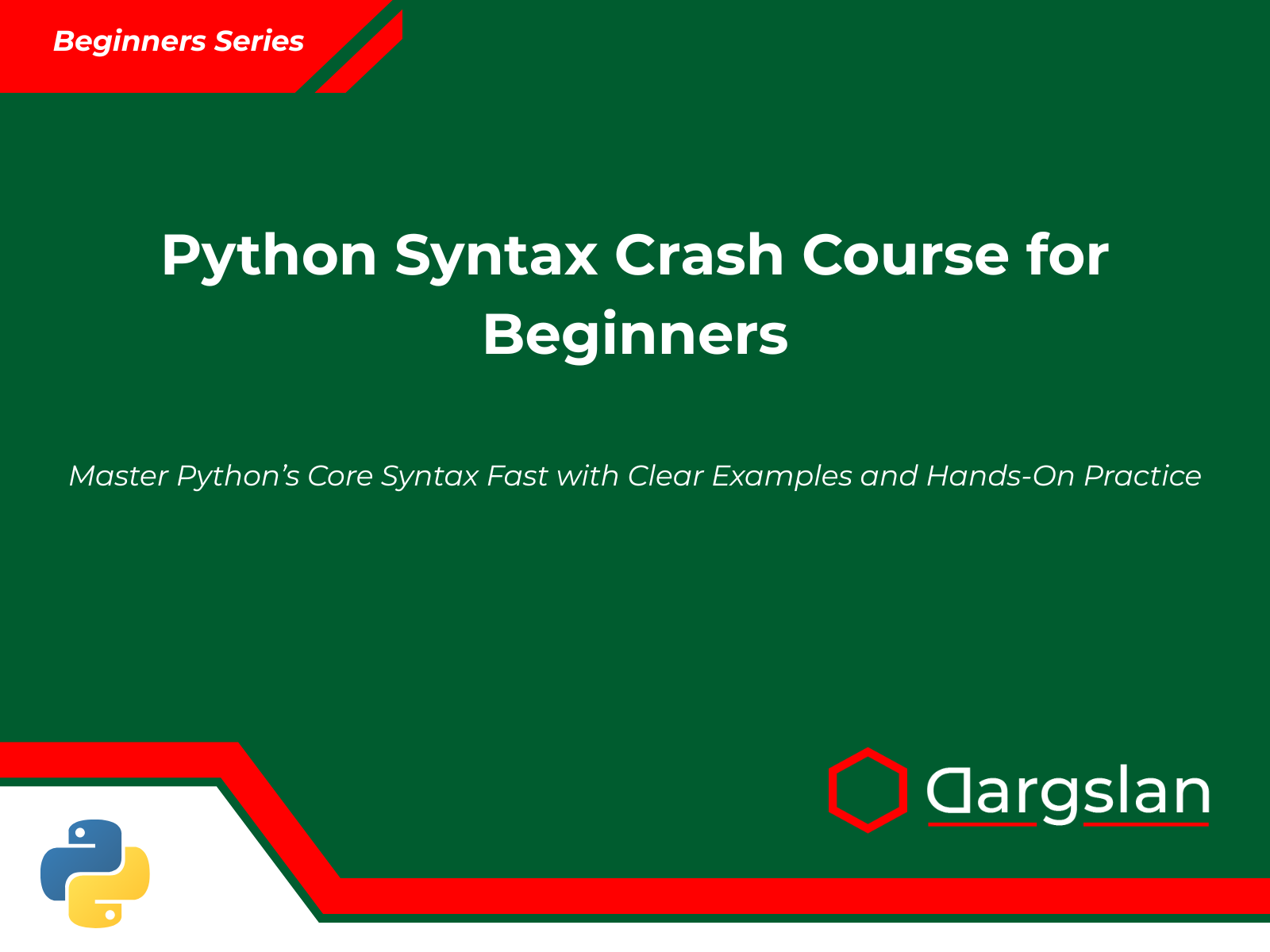
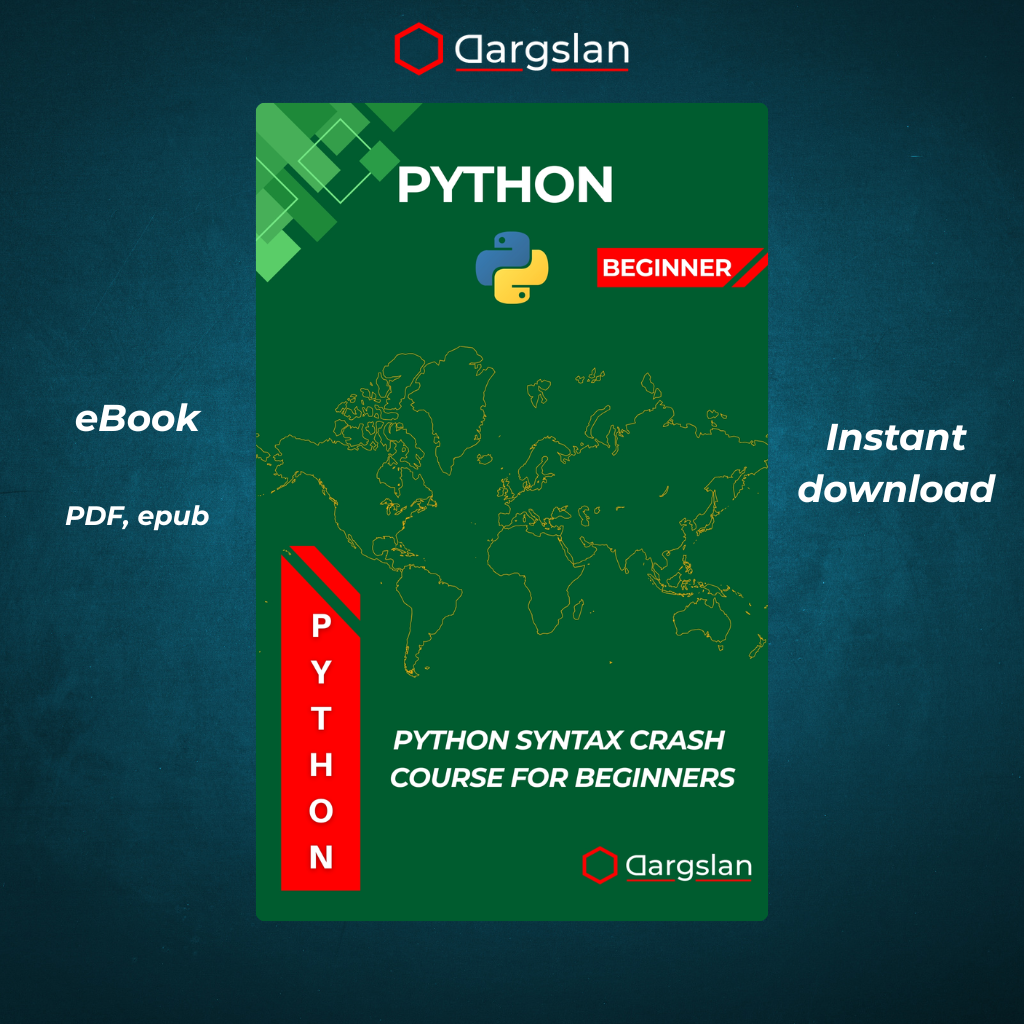
Python Syntax Crash Course for Beginners
Master Python’s Core Syntax Fast with Clear Examples and Hands-On Practice
Python Syntax Crash Course for Beginners: A Comprehensive Review
Introduction: Why This Book Matters in 2023
In today's technology-driven world, programming skills have become increasingly valuable across virtually every industry. Python, with its readable syntax and versatile applications, has emerged as the language of choice for beginners and professionals alike. "Python Syntax Crash Course for Beginners" by Dargslan offers an efficient, structured approach to mastering this essential programming language, positioning itself as an invaluable resource in the coding education landscape.
As artificial intelligence, data science, and automation continue to transform our professional environments, Python proficiency has evolved from a specialist skill to a fundamental literacy for the modern workforce. This book recognizes this shift and delivers precisely what many aspiring programmers need: a direct, no-nonsense path to Python competency.
Book Overview: A Strategic Approach to Python Mastery
Core Philosophy and Structure
This crash course distinguishes itself through its laser focus on Python's core syntax—the fundamental building blocks that enable all Python programming. Rather than overwhelming readers with advanced concepts before they've mastered the basics, the author has carefully structured the content to build competence systematically.
The book comprises ten meticulously crafted chapters that progress logically from environment setup to complex data structures and modular programming. This sequential approach ensures readers develop a solid foundation before tackling more advanced concepts. Complementing these chapters are four practical appendices designed to support application and retention of the material.
Learning Methodology
What sets this resource apart is its commitment to active learning. Each chapter combines:
- Clear, concise explanations of key concepts
- Practical, real-world examples that demonstrate applications
- Hands-on exercises that reinforce understanding
- Common pitfalls and troubleshooting guidance
This multimodal approach caters to diverse learning styles while emphasizing practical application—a crucial factor in programming education where theoretical knowledge alone is insufficient.
Chapter-by-Chapter Analysis: The Learning Journey
Chapter 1: Getting Started with Python
The journey begins with practical foundations, addressing the critical first steps that often create barriers for newcomers. This chapter covers:
- Installing Python across different operating systems (Windows, macOS, Linux)
- Setting up a productive development environment
- Understanding the Python interpreter and IDLE
- Writing and executing your first Python program
- Best practices for organizing Python projects
By removing technical hurdles upfront, this chapter ensures readers can focus on learning rather than troubleshooting installation issues—a common pain point in programming education.
Chapter 2: Python Variables and Data Types
Building on the technical setup, Chapter 2 introduces the fundamental building blocks of Python programming:
- Variable creation, naming conventions, and best practices
- Python's core data types: integers, floats, strings, and booleans
- Type conversion and checking
- Dynamic typing and its implications
- Constants and when to use them
The author excels at explaining Python's dynamic typing system—a concept that often confuses beginners coming from statically-typed languages. The examples clearly demonstrate how Python handles different data types, preparing readers for effective data manipulation.
Chapter 3: Operators and Expressions
This chapter delves into how Python manipulates and combines data:
- Arithmetic operators (+, -, *, /, //, %, **)
- Assignment operators and shorthand notations
- Comparison operators and boolean logic
- Bitwise operators for advanced operations
- Operator precedence and expression evaluation
Particularly valuable is the section on operator precedence, which uses visual examples to demonstrate how Python evaluates complex expressions—knowledge that prevents subtle logic errors in future code.
Chapter 4: Control Flow – if, elif, else
Decision-making structures form the backbone of programming logic, and this chapter provides a thorough treatment:
- Conditional statements and their syntax
- Nested conditions and complex decision trees
- The ternary operator for concise conditionals
- Boolean expressions and truth value testing
- Best practices for readable conditional logic
The author's approach to teaching conditional logic emphasizes not just functionality but readability—a core Python value summarized in the language's zen as "Readability counts."
Chapter 5: Loops – for and while
Iteration is a fundamental programming concept, and Chapter 5 covers:
- For loops for definite iteration
- While loops for conditional iteration
- Loop control statements: break, continue, and pass
- Nested loops and their applications
- List comprehensions as a powerful alternative
The section on list comprehensions introduces readers to one of Python's most elegant features, demonstrating how this language-specific construct can replace multiple lines of traditional loop code with a single, readable line.
Chapter 6: Working with Strings
Text processing is central to many programming tasks, and this chapter provides comprehensive coverage:
- String creation, indexing, and slicing
- String methods for manipulation and analysis
- Formatting with f-strings, .format(), and % operator
- Regular expressions for pattern matching
- Unicode handling and encoding issues
The author's treatment of f-strings is particularly timely, highlighting this modern approach to string formatting introduced in Python 3.6 that has become the preferred method among Python developers.
Chapter 7: Lists and Dictionaries
Complex data structures enable sophisticated programming, and this chapter introduces two of Python's most important collections:
- List creation, indexing, and manipulation
- List methods and operations
- Dictionary creation and key-value pair management
- Dictionary methods and use cases
- Nested data structures for complex data representation
The examples demonstrate how these structures solve real-world data organization problems, moving beyond abstract concepts to practical applications.
Chapter 8: Functions – Writing Reusable Code
Code reusability is essential for efficient programming, and Chapter 8 covers:
- Function definition and calling syntax
- Parameters, arguments, and return values
- Default arguments and keyword arguments
- Variable scope and namespace concepts
- Lambda functions for lightweight function creation
The author emphasizes the "DRY" (Don't Repeat Yourself) principle, demonstrating how well-designed functions improve code maintainability and readability.
Chapter 9: Importing Modules
Python's extensive ecosystem is one of its greatest strengths, and this chapter introduces:
- Module importing syntax and variations
- The Python Standard Library's key modules
- Creating and organizing custom modules
- Package management with pip
- Virtual environments for dependency management
By introducing readers to Python's module system, this chapter opens the door to leveraging the thousands of packages that make Python so versatile across different domains.
Chapter 10: Syntax Review Challenge
The final chapter consolidates learning through practical application:
- Comprehensive review exercises covering all syntax elements
- A capstone mini-project integrating multiple concepts
- Common syntax pitfalls and how to avoid them
- Self-assessment questions and syntax debugging practice
- Resources for continued learning and skill development
This hands-on conclusion transforms passive knowledge into active skills, reinforcing the book's practical approach to learning.
The Appendices: Tools for Continued Success
Python Syntax Cheat Sheet
This reference resource provides concise syntax examples for all major Python constructs. Its value extends well beyond the book itself, serving as a quick reference during future programming efforts. The organization by concept rather than alphabetically shows the author's understanding of how programmers actually use reference materials.
Common Errors and How to Fix Them
Perhaps the most unique and valuable appendix, this section addresses the reality of programming: everyone makes mistakes. By cataloging common Python errors with their causes and solutions, the author transforms potentially frustrating debugging experiences into valuable learning opportunities. The inclusion of actual error messages alongside explanations helps readers connect theoretical knowledge with practical troubleshooting.
Practice Exercises (with Solutions)
This appendix provides additional hands-on practice opportunities with incrementally challenging exercises for each chapter. The inclusion of detailed solutions—not just answers but explanations of the approach—supports self-directed learning and helps readers understand not just what works but why it works.
30-Minute Daily Study Plan for 2 Weeks
Recognizing that learning requires structure, this appendix offers a practical roadmap for consistent progress. The 14-day plan breaks down the book's content into manageable daily chunks, with specific goals and practice exercises for each session. This structured approach helps combat the common challenge of information overload in programming education.
Target Audience: Who Benefits Most
This Python crash course is ideally suited for:
- Complete beginners with no prior programming experience
- Students seeking to supplement formal computer science education
- Career changers looking to acquire in-demand programming skills
- Professionals in adjacent fields (data analysis, science, engineering) who need Python for specific applications
- Self-taught programmers with gaps in their fundamental knowledge
- Educators and trainers seeking a structured curriculum for teaching Python basics
The book assumes no prior programming knowledge but progresses at a pace that keeps even quick learners engaged. The focus on syntax rather than domain-specific applications ensures relevance across different professional contexts, from web development to data science.
Practical Applications: From Learning to Doing
The knowledge presented in this book directly enables readers to:
- Automate repetitive tasks and workflows
- Analyze and visualize data using Python libraries
- Build simple web applications and scripts
- Process and manipulate text files and documents
- Create basic command-line tools and utilities
- Understand and modify existing Python code
- Establish the foundation for more specialized paths like machine learning or web development
The author consistently connects syntax concepts to practical use cases, ensuring readers understand not just how Python works but why particular features matter in real-world programming.
Standout Features: What Makes This Book Exceptional
1. Accessibility Without Oversimplification
The author maintains a delicate balance, making concepts accessible to beginners without oversimplifying the technical details that matter. This approach respects the reader's intelligence while acknowledging their novice status.
2. Modern Python Focus
Unlike some programming books that lag behind language developments, this crash course embraces modern Python 3 practices, including f-strings, type hints, and current best practices. This currency ensures readers learn relevant, contemporary approaches rather than outdated patterns.
3. Progressive Knowledge Building
Each chapter builds deliberately on previous content, creating a scaffold of knowledge that supports increasingly complex concepts. This thoughtful progression prevents the cognitive overload common in programming education.
4. Error-Conscious Approach
By addressing common mistakes proactively, the book prepares readers for the reality of programming: debugging is part of the process. This pragmatic attitude demystifies error messages and builds troubleshooting confidence.
5. Application-Oriented Examples
Examples throughout the book reflect realistic programming scenarios rather than contrived academic exercises. This application focus helps readers connect syntax to purpose—understanding not just how to write code but why to write it a certain way.
Comparative Analysis: How It Stacks Up
In the crowded field of Python instructional resources, this crash course occupies a specific and valuable niche:
- Compared to comprehensive references like "Learning Python" by Mark Lutz, it offers a more focused, faster path to practical competency.
- In contrast to project-based books like "Automate the Boring Stuff with Python," it provides more systematic coverage of fundamental syntax.
- Unlike online tutorials that often lack structure, it presents a coherent, progressive learning path.
- Compared to academic textbooks, it emphasizes practical application over theoretical computer science.
The book's closest comparison might be "Python Crash Course" by Eric Matthes, but Dargslan's offering provides a more concentrated focus on syntax fundamentals with its unique error-oriented approach and structured practice plan.
Learning Outcomes: What Readers Will Gain
Upon completing this book, readers will have developed:
-
Technical Skills
- Ability to write syntactically correct Python code
- Proficiency in using Python's core data structures
- Capability to create functions and modular code
- Skills to debug common Python errors
- Knowledge to leverage Python's standard library
-
Conceptual Understanding
- Comprehension of programming logic and flow control
- Insight into Python's design philosophy
- Understanding of code organization principles
- Awareness of Python's type system and memory management
- Recognition of efficient coding patterns
-
Practical Capabilities
- Confidence to tackle basic programming tasks
- Ability to read and understand others' Python code
- Foundation for learning more advanced Python concepts
- Skills transferable to other programming languages
- Self-sufficiency in continuing Python education
Potential Limitations
In the interest of a balanced review, it's worth noting a few areas where readers might need supplementary resources:
-
Domain-Specific Applications: While the syntax fundamentals apply universally, readers interested in specific fields like data science or web development will need additional, specialized resources.
-
Advanced Object-Oriented Programming: The book introduces classes and objects but doesn't deeply explore advanced OOP concepts, which is appropriate for its scope but should be noted by readers seeking comprehensive OOP knowledge.
-
GUI Development: The focus on syntax means minimal coverage of graphical user interface development, which would require additional learning resources.
-
Deployment and Production Concerns: As expected in a beginner-focused book, topics like deployment, scaling, and production optimization are beyond the scope.
These limitations aren't weaknesses but rather reflect the book's intentional focus on syntax fundamentals—a scope decision that serves its primary audience effectively.
Final Assessment: A Worthy Investment
"Python Syntax Crash Course for Beginners" delivers exceptional value through its focused approach, practical methodology, and thoughtful structure. It succeeds in its primary mission: providing an efficient path to Python syntax proficiency without unnecessary detours or overwhelming complexity.
For beginners seeking to establish a solid Python foundation, this book represents an optimal starting point that balances comprehensiveness with accessibility. The inclusion of practical appendices extends its value beyond initial learning, creating a reference resource that continues to support the reader's Python journey.
In an educational landscape often characterized by either overwhelming detail or superficial coverage, this crash course finds the sweet spot—delivering precisely what beginners need most: clear explanation, practical application, and structured progression.
Whether you're pursuing Python for career advancement, academic requirements, or personal projects, this book provides the essential syntax knowledge that will enable your success. Highly recommended for anyone seeking an efficient, effective introduction to Python programming.
Key Takeaways for Prospective Readers
- Focused Content: Master Python's core syntax without unnecessary complexity
- Practical Approach: Learn through clear examples and hands-on practice
- Progressive Structure: Build knowledge systematically from basics to advanced concepts
- Error Intelligence: Develop debugging skills alongside programming knowledge
- Continued Support: Benefit from reference materials and structured practice plans
- Modern Relevance: Learn contemporary Python 3 practices and conventions
- Universal Foundation: Establish skills applicable across all Python specializations
For anyone serious about learning Python efficiently and effectively, "Python Syntax Crash Course for Beginners" represents an optimal entry point to this powerful, versatile programming language.
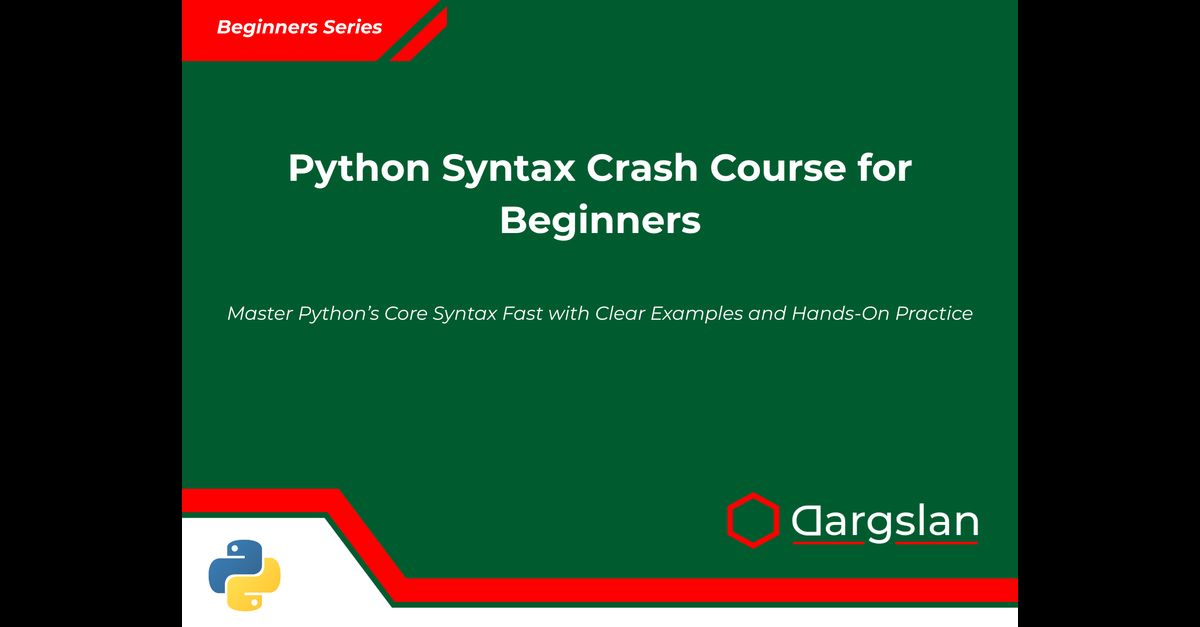
Python Syntax Crash Course for Beginners



